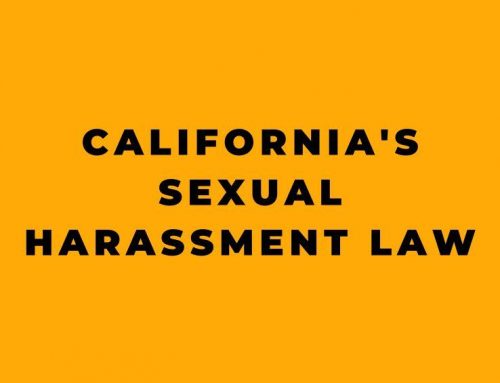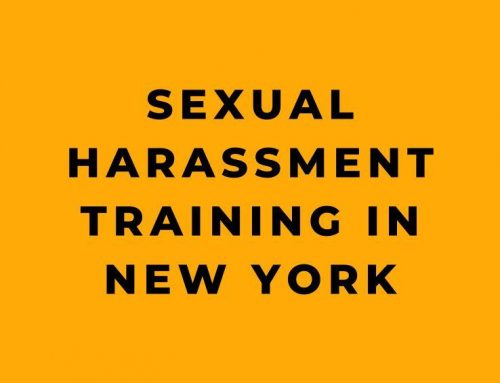Introduction
Sexual harassment in the workplace is a pervasive issue that affects employees across various industries and positions. Understanding the different forms of harassment and knowing how to address them is crucial for maintaining a safe and respectful work environment. This article aims to provide employees with practical examples of sexual harassment, the legal framework surrounding it, and the steps to take if they experience harassment in the workplace.
Recognizing Sexual Harassment
Sexual harassment can take many forms, ranging from overt actions to subtle behaviors. Recognizing these behaviors is the first step in addressing the issue. Here are some examples and hypothetical situations.
- Unwanted touching, such as hugging, patting, or brushing up against someone: A coworker repeatedly hugs or pats another employee without their consent, making them uncomfortable. In another situation, an employee brushes up against a colleague intentionally, even when there is enough space to avoid contact.
- Requests for sexual favors in exchange for job benefits or promotions: A manager implies that an employee will receive a promotion or a raise if they engage in a sexual relationship with them. Alternatively, a supervisor threatens to fire an employee if they refuse to go on a date with them.
- Sexually explicit comments or jokes that make others uncomfortable: A group of employees regularly share offensive jokes or stories of a sexual nature, making others in the workplace uncomfortable. In another example, a coworker makes inappropriate comments about a colleague’s appearance or clothing.
- Suggestive gestures or leering: An employee repeatedly stares at a coworker’s body or makes suggestive gestures, making the coworker feel objectified and uncomfortable. In another situation, a colleague uses “elevator eyes,” looking a person up and down in a sexual manner.
- Inappropriate electronic communication, such as sending explicit images or messages: A supervisor sends explicit images or messages to an employee without their consent. In another example, a coworker persistently sends flirtatious messages to a colleague, even after being asked to stop.
It is important to note that sexual harassment can be perpetrated by anyone in the workplace, regardless of their position or gender. Additionally, harassment can occur between people of the same gender or different genders. Here are some hypothetical situations illustrating this point:
- A female supervisor makes inappropriate comments about a male employee’s appearance, making him uncomfortable.
- Two coworkers of the same gender engage in unwanted touching or share explicit images without consent, creating a hostile work environment for the other person.
Remember that recognizing these behaviors is crucial for addressing and preventing sexual harassment in the workplace.
Legal Framework and Types of Harassment
Sexual harassment is prohibited under Title VII of the Civil Rights Act of 1964, which applies to employers with 15 or more employees. Many states also have their own laws addressing sexual harassment in the workplace. There are two main categories of sexual harassment:
- Quid pro quo harassment: This occurs when a person in a position of authority, such as a supervisor or manager, demands sexual favors in exchange for job benefits, promotions, or continued employment. Quid pro quo harassment can be explicit or implied through actions or comments.
- Hostile work environment harassment: This type of harassment occurs when unwelcome sexual conduct creates an intimidating, hostile, or offensive work environment. A hostile work environment can be created by a single severe incident or a pattern of less severe incidents.
Both types of harassment are illegal, and employers can be held liable for the actions of their employees if they fail to take appropriate steps to prevent and address harassment.
Reporting Sexual Harassment
If you experience sexual harassment in the workplace, it is important to take action and report the behavior. Here are some steps to follow:
- Document the incidents: Keep a detailed record of the harassment, including dates, times, locations, and the people involved. Save any relevant emails, texts, or other evidence.
- Follow company policies: Review your employer’s policies on sexual harassment and follow the reporting procedures outlined in the policy.
- Report to management or HR: Notify your supervisor, manager, or human resources department about the harassment. If the harasser is your supervisor, report the issue to someone higher up in the organization or to HR.
- Know your rights: Employees who report sexual harassment are protected from retaliation under Title VII and state laws. Retaliation can include actions such as demotion, termination, or harassment.
Employer Responsibilities
Employers have a responsibility to prevent and address sexual harassment in the workplace. Some key responsibilities include:
- Adopting written policies: Employers should have clear, written policies on sexual harassment that outline the reporting procedures, investigation process, and potential consequences for harassers.
- Conducting investigations: When a complaint is filed, employers should promptly and thoroughly investigate the allegations and take appropriate corrective action if harassment is found.
- Training and education: Employers should provide regular training and education on sexual harassment prevention for all employees, including supervisors and managers.
By fulfilling these responsibilities, employers can create a safer and more respectful work environment for all employees.
Seeking External Help and Resources
If you need additional support or guidance, there are several external resources and organizations available to help. Some options include:
- National Sexual Assault Hotline: Operated by RAINN, this confidential hotline provides 24/7 support for individuals affected by sexual harassment or assault.
- Equal Employment Opportunity Commission (EEOC): The EEOC enforces federal laws prohibiting workplace discrimination, including sexual harassment. They can provide information on your rights and the complaint process.
Legal Action and Remedies
If you have experienced sexual harassment in the workplace and your employer has not taken appropriate action, you may consider taking legal action against the harasser or the employer. Potential remedies for sexual harassment claims can include:
- Reinstatement or promotion if you were demoted or denied a promotion due to harassment.
- Back pay for lost wages.
- Compensation for emotional distress.
- Attorney’s fees and court costs.
Before pursuing legal action, it is important to consult with an attorney who specializes in employment law to discuss your options and the potential outcomes of your case.
Conclusion
Understanding and addressing sexual harassment in the workplace is crucial for maintaining a safe and respectful work environment. By recognizing the different forms of harassment, knowing your rights, and taking appropriate action when necessary, you can help protect yourself and others from this harmful behavior. If you experience sexual harassment, do not hesitate to seek help and take action to ensure your rights are protected.
Now that you’re equipped with the knowledge to identify and report sexual harassment, it’s crucial to take proactive steps to prevent it in the first place. Prevention is always better than cure, and that’s especially true when it comes to creating a safe and respectful workplace. If you’re an employer or in a position of leadership, the onus is on you to not just act when harassment occurs, but to cultivate an environment where it’s less likely to happen at all. The best way to achieve this is through continuous education and training. We’ve got a groundbreaking solution that can arm you and your employees with the tools needed to eliminate sexual harassment from your workplace altogether.
Introducing our breakthrough online training solutions— “Preventing Sexual Harassment… for Employees”—created to arm your workforce with the vital knowledge and skills to combat this epidemic. Imagine a workplace where every team member understands not just the black-and-white legalities but also the gray areas, the unsaid but understood boundaries.
What We Offer
- Micro-Learning Modules: Too busy for a full course? We offer bite-sized 3-5 minute modules that can easily fit into your workday.
- Full-Length Online Courses: For those who want a deep dive, these courses offer an in-depth look into every facet of the issue.
- Bilingual Courses: Every product in our suite is available in both English and Spanish to cater to a diverse workforce.
What You’ll Learn
- Define sexual harassment and recognize it when it occurs.
- Understand offensive behavior that often goes overlooked but is equally harmful.
- Navigate company policy and maintain a decorum that fosters respect.
- Take effective action when you or someone else is victimized.
- Confidently report incidents, secure in the knowledge that you’re taking steps to better your workplace.
The Bottom Line? Our training products are more than just courses; they’re a safeguard for your organization’s reputation, a shield for your employees, and a bulletproof vest for your bottom line.
Don’t let sexual harassment become your organization’s silent downfall. Equip your team today with the essential tools to foster a safe, respectful, and harmonious workplace environment.
Act Now Ready to turn your workplace into a stronghold of respect and dignity? Click the link below to get started today.
Sources:
- Nolo: What Kinds of Behaviors Are Considered Sexual Harassment?
- RAINN: National Sexual Assault Hotline: Confidential 24/7 Support
- Mass.gov: About Sexual Harassment in the Workplace
- Justia: Sexual Harassment Laws in Employment
- Nolo: Preventing Sexual Harassment in the Workplace
- Walker Law: 10 Examples of Sexual Harassment That You Didn’t Realize Were Sexual Harassment
- Legal Voice: Sexual Harassment at Work
- EEOC: Sexual Harassment
- AAUW: Know Your Rights: Workplace Sexual Harassment
- UpCounsel: Examples of Sexual Harassment
- Equal Rights Advocates: Sexual Harassment
- Cornell Law: 29 CFR § 1604.11 – Sexual harassment
- The Muse: Here’s What You Can Do if You’re Sexually Harassed at Work
- LegalZoom: How to handle sexual harassment at work
- Graber Employment Law: Federal Sexual Harassment Law










